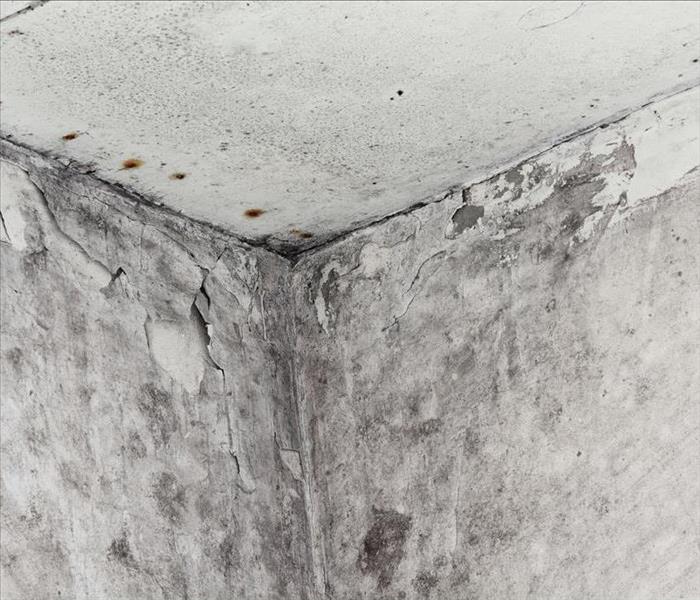7 Mold Prevention Tips
9/9/2021 (Permalink)
Mold occurs naturally in the environment and can grow almost anywhere. Water damage can accelerate mold growth because mold tends to thrive in moist environments. These seven tips can help you avoid mold in your buildings.
How to avoid mold
1. Identify Problems and Correct Them
Inspect your buildings and look for conditions that could promote mold growth, such as areas that tend to flood, leaking pipes, condensation, leaks in the roof, or other sources of moisture. Remove and discard any wet carpeting, drywall, or ceiling tiles. Repair leaking pipes and equipment. Take steps to reduce flooding, such as installing sump pumps or regrading outdoor areas to direct water away from your buildings. Have your HVAC system inspected and repaired if condensation is a problem.
2. Remove Excess Moisture Promptly
Most mold growth results from excess moisture in the environment. If you have had water damage in your building, contact a remediation company in Clearfield, UT, to quickly dry out your property. Aim to completely dry your property within 24 to 48 hours. Remove wet furniture, carpets, and other difficult-to-dry items from the building. Some items may be able to be dried and restored. Others will need to be discarded.
3. Install Proper Ventilation
If your business engages in activities that produce moisture, a key part of mold prevention is ensuring proper ventilation. Any bathrooms, kitchen areas, laundry facilities, and other high moisture areas should have ventilation systems to remove excess moisture to the outside. You can also reduce moisture by using dehumidifiers. Energy-efficient buildings can sometimes trap moisture inside, so it may be useful to occasionally open windows or doors.
4. Monitor Indoor Humidity
The Environmental Protection Agency recommends humidity levels be kept between 30% and 60%. Excessive humidity can cause condensation on pipes, walls, and windows. Purchase a humidity monitor and take steps to adjust the humidity levels in your buildings as needed. Humidity levels change throughout the day, so take multiple readings at different times. You can use air conditioners and dehumidifiers to reduce humidity levels.
5. Use Mold-Resistant Materials
If you need to construct a new building or remodel an existing one, use mold-resistant materials. Mold-resistant drywall and sheetrock are available for interior walls and you can cover these materials with mold-resistant paint.
6. Use HEPA Filters and Ultraviolet Lights
If your buildings have carpeting, use a vacuum with a HEPA filter when you clean to remove mold spores from carpets and flooring. You can also use these vacuums to clean air vents. Installing ultraviolet lights in mold-prone areas, such as HVAC systems, can also help.
7. Don't Store Materials in Damp Areas
Cardboard boxes and other items made from paper or fabric are particularly susceptible to mold. Avoid storing these items in damp areas. Throw out anything that has mold on it that can not be restored.
Because mold needs water to thrive, controlling water damage is the key to avoiding mold problems. However, it is not always possible to completely avoid mold, so if you do encounter it, take steps to remove it before it can spread to other areas of your building.




 24/7 Emergency Service
24/7 Emergency Service
